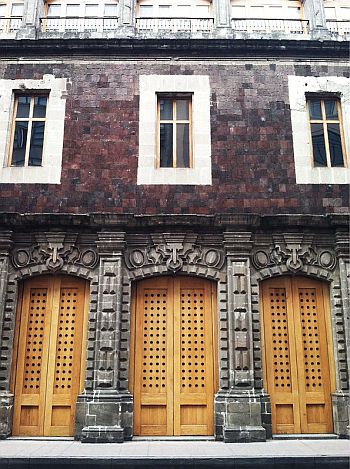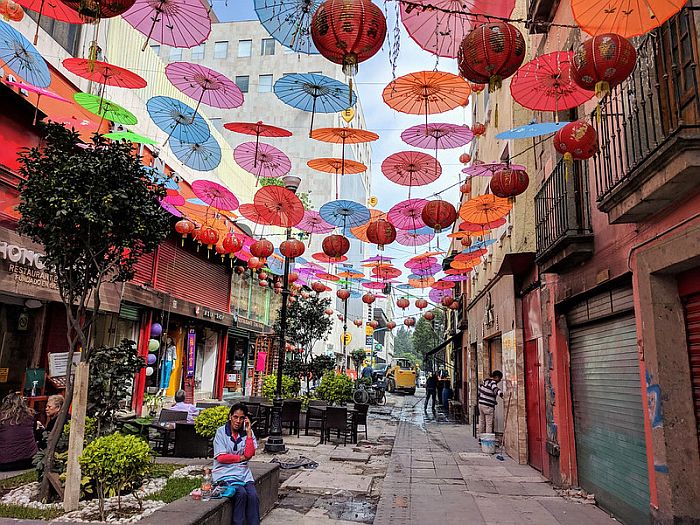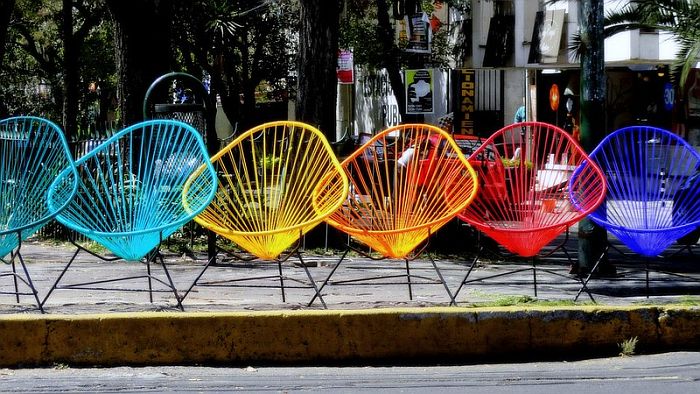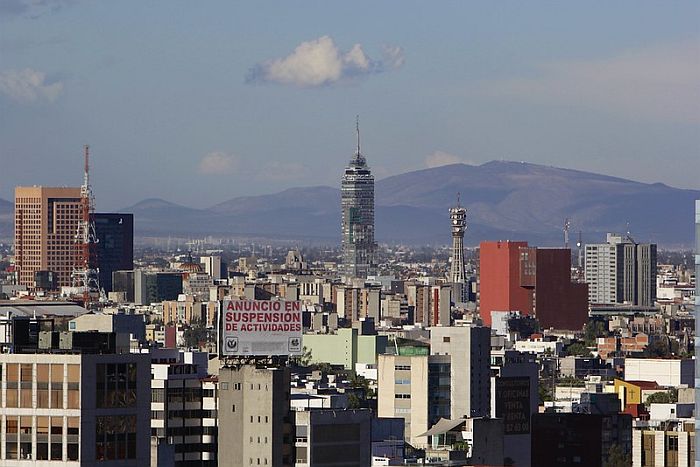So you’ve made the leap and decided to move full or part-time to Mexico City. I couldn’t be happier for you! This is an incredible city with so much to offer — food, culture, history, art — anything you want you can find it here. Whether you are coming to teach English as a second language for a few years, or working as a digital nomad for a few months, or possibly making a complete life change, it can be more comfortable and a more real experience to rent an apartment in a neighborhood instead of paying exorbitant prices for an Airbnb or hotel for six months.
I get a lot of people who ask me exactly how to rent an apartment in Mexico City as a foreigner. There are few different avenues to take when looking for a place to live in CDMX and I am going to lay out a few of those here. Plus, what you can expect in terms of requirements and rent.
Short-term rentals
Taking the initial step doesn’t need require a big investment. Grab a cheap or free flight to the city, and try a few different areas out first. Especially, if you’ve never spent time in Mexico City on a long-term basis my first suggestion is an apartment on a short term rental site to start. A few month-long rentals will allow you to explore some different Mexico City neighborhoods and get a sense of the kind of place you are looking for.
You might love Condesa for a weekend, but once you live there for a few weeks you realize you want a neighborhood with fewer foreigners and a cheaper price tag. You might adore the shopping in Polanco but spend a few Fridays in the traffic and reach your limit. Coyoacan might be your dream location, but after a few weeks, you feel desperately far from the center of the city. There are good things and bad about each area of CDMX and a few short-term rentals will give you a better taste of what is for you and also an opportunity to scout out some lesser-known neighborhoods you might find interesting. Once you get an idea about where you want to rent permanently, there are few other services you can take advantage of.
There are several different sites for short-term rentals in the city. Airbnb.com with local apartments in real neighborhoods has a large location selection and wide range of prices.
Interested in staying in an up-and-coming Mexican neighborhood that’s close enough to Roma to walk but far enough away to feel like a place where real chilangos live? Contact me (lydia[at]mexicocitystreets.com) about renting my place in Colonia Del Valle. See the photos below.
Craigslist
Craigslist is still a great place to find apartments for rent in Mexico City, especially for foreigners because there are so many listings in English. The Mexico City Craigslist is constantly updated with offerings for houses and apartments in neighborhoods across the metropolitan area. The best thing about Craigslist in my opinion is all the info is right there, price, bedrooms, photos, etc, and many people that are listing on Craigslist are individual owners, meaning it might be easier to negotiate with them about the requirements you will need for renting an apartment here in the city.
Another couple of websites that I like are https://www.lamudi.com.mx/, my favorite, which you can search by neighborhood. They have a really wide variety of prices and locations, but the site is all in Spanish. There’s also https://www.inmuebles24.com/ and https://homie.mx/, both also in Spanish.
Homie is supposed to make it easier to rent an apartment without a deposit payment or an aval (I explain what an aval is below). Instead, you have to provide proof of income and they run a credit check on you. You do have to pay a fee to the Homie people which feels kinda like paying a deposit, no? And then they serve as your aval for the landlord. I have never used this service so I can’t tell you all the ins and outs, but I do think their website is less user-friendly than the others I mentioned and doesn’t have as many properties to look through.
There are several Facebook groups that are primarily aimed at foreigners that are visiting or living in Mexico City. While you may want to pull your hair out at all the snarky and holier-than-thou comments on these lists, they can also be an incredible source of information. Often Mexican or foreign members will post about apartments for rent or for sublet. It’s a nice way to do a direct deal, and people that post their properties in these groups realize that out-of-towners might not have all of the common requirements for renting (we will talk about that later) and seem to be more flexible.
Try Americans in Mexico City, Foreigners in Mexico City (CDMX), Foreigners in the City (Mexico City), Expats in Mexico, Expats Living in Mexico, Foreigners in Mexico City, Internationals and Ex-pats in Mexico City, and AmericanExpats/Friends in Mexico City.
Facebook Marketplace is also a good source for apartments for rent, and from what I have seen on other websites that list for Mexico City, the apartments on Marketplace tend to run cheaper.
Real Estate Agents
There are literally thousands of real estate agencies in the city to choose from. Some new residents like to go with companies that have an international presence that they already trust like Caldwell Bankers or Sotheby’s but there are an equal amount of great individual agents and local agencies. The groups I mentioned on Facebook always have promotions for individuals that people like and it’s always good to ask around and get a local’s recommendation.
Staying well-informed about the most current housing prices through these channels ensures that you’re equipped with the knowledge needed to make a wise and informed decision about your real estate investments. In this ever-changing real estate landscape, the ability to interpret and act upon the most recent housing price data is a valuable skill. Whether you are a first-time buyer, a seasoned investor, or someone looking to sell their property, this knowledge serves as a reliable compass, guiding you toward profitable and prudent real estate decisions.
Agents generally get paid by property owners that they represent, but in certain instances will charge a commission to renters that want more personalized care and attention in their apartment search.
Sign Hunting
A final option if you have the time and energy might be to simply walk the neighborhood you are interested in living in and keep an eye out for For Rent signs. Like I mentioned previously, sometimes all you get on a For Rent sign is the phone number, but different from the other options above, when you find a sign on a building you know exactly where you will be living, what public transportation is close to you, where is the nearest grocery store, etc.
Beware, oftentimes there are signs, especially on light poles, that say For Rent but they are actually for another neighborhood altogether; make sure you read the fine print.
What you need to rent an apartment in Mexico City
First and foremost a little basic Spanish or a really compassionate person that is willing to translate for you. It feels so obvious saying this, but you shouldn’t expect anyone in Mexico City to speak your language, nor that contracts will be in your language. That’s not to say that there aren’t TONS of professionals who speak English, French, Russian, etc, but you should do the work and learn some basic Spanish to ask questions and get information.
Most apartments require both a deposit and the first month’s rent. Some require a last month’s rent or two months’ rent in advance. It is complicated for landlords to kick people out of apartments in Mexico City; the laws have been set up for a long time to protect renters. Therefore landlords go through a lot to ensure they will get paid no matter what.
That brings us to the most annoying requirement in my opinion and that’s that you have a financial guarantor. But not just any guarantor, someone who owns property FREE and CLEAR (no mortgage) within the city limits. They have to sign your rental contract agreeing to pay your rent if you don’t. This is called an aval.
I spoke with Oscar Rameríz, a local real estate agent about your options if you don’t have someone who owns a piece of property and he told me there are two more options, one called an Obligado Solidario, which is basically someone that signs a contract committing to be a co-renter, meaning they will help you pay your rent if you can’t. This person does not have to own property in the city.
The second option that Rameríz told me about was a Policia Juridico de arrendamiento which is a bit like an insurance policy that both the renter and landlord pay a part of and it protects them both; the landlord from not being paid and the renter from being charged money beyond what the rental agreement sets out or being forced to move out before the contract term is over.
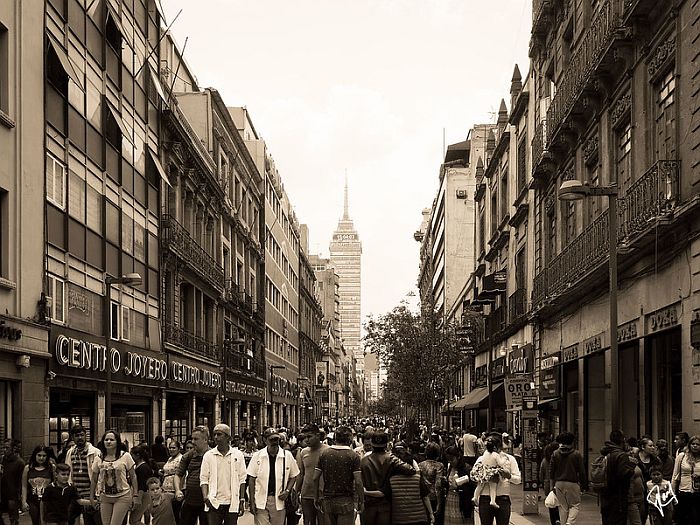
Now, many landlords and rental companies that work specifically with foreigners understand an aval is a difficult requirement to obtain for someone with little to no contacts in the city. Some can be appeased by a big up-front payment (a year in advance, six months in advance) in order to waive this requirement. Some will accept bank statements or letters from employers that confirm your regular income. Some will waive this requirement altogether. But MANY and I would even say MOST rentals require an aval.
If you get desperate there is a legal (but slightly frowned upon by landlords) final option which is purchasing an aval. There are several websites and an entire area of offices in the Colonia Doctores where you can arrange to purchase an aval. The cost of this service is likely to be the cost of an entire month’s rent, but may be more depending on what kind of a place you are renting.
In exchange for your money you will get all the official paperwork from your aval needed for the contract (ie a copy of the title to her property, a copy of her ID; etc.). Some landlords after a year of your initial contract won’t bother with the aval for the following years, some will require that you get an aval’s signature every year that you rent with them. It’s a pain in the ass.
How much is the average rent in Mexico City?
Prices for apartments here are all over the place and it all depends on the neighborhood or part of the city you want to live in. While prices are always shifting I would say the following are average prices for some of the city’s neighborhoods
Average Mexico City rent by neighborhood
Roma 850- 1430usd (15,000-25,000 pesos)
Condesa 1000 – 1700usd (17,500 – 30,000 pesos)
Polanco 1150 – 2290usd (20,000-40,000 pesos)
Narvarte and Del Valle – 850-1,300usd (15,000-23,000 pesos)
Santa Maria de Ribera 750-1,150usd (13,000-20,000 pesos)
San Rafael 575-1030usd (10,000 – 18,000pesos)
Coyoacan 915-2000usd (16,000- 35,000pesos)
All these prices are just my personal opinion on averages and what I see available online. Everything is of course location, location, location. Living in Condesa on Insurgentes Avenue is probably five times cheaper than living on Amsterdam circle.
In some of the higher-end neighborhoods like Polanco or Condesa you can find apartments for 2, 3, 4,000 dollars if you really want to get extravagant, but paying those kinds of rents also jacks up rents all over the city making it hard for everyone to pay their rent so do the rest of us a favor and try to stay away from them.
The further out you go and the more of a working-class neighborhood you are willing to live in, the cheaper rent you can find. I´ve known people living near Jamaica market, which is a bit run-down but still very centrally located, paying under 300 dollars a month. The more touristy the neighborhood (Roma, Condesa) the more expensive, the more residential, and the rents start to go down UNLESS you want to live in Las Lomas or Santa Fe or somewhere near there, where it doesn’t matter if it’s residential or not, it’s gonna be expensive.
Want to know a little more about some of the city’s more popular neighborhoods? Read This.
A few final tidbits
Just a few last things that I would have wanted to know when I moved here. While there are Sam’s and Costco here, the more common grocery stores are Sumesa, Superama, Chedraui, and CIty Market. Most neighborhoods (the most affluent don’t have many) have small convenience stores called abarrotes, where they sell a mix of things you would expect to find in a gas station store as well as a limited amount of fresh vegetables and household supplies. Keep an eye out for your weekly outdoor tianguis (market) as most neighborhoods have one, and they offer fresh fruit and vegetables, plants, street food stalls, clothing stalls, and lots more.
You can pay most bills, add credit to a phone, and make bank deposits to your own account or to someone else’s at OXXO stores – just make sure you bring along your bill to scan or all the info necessary to make the transaction. You can also pay many bills at the grocery store.
I have written a handy dandy guide to using public transportation that you will want to check if you plan to be here long-term – we have a great transit system and you should take advantage! Also, here are a few museums that I like and don’t like. Remember that lots of public buildings are closed on Mondays and federal holidays, which at many times combine because Mexico now creates long weekends for holidays as the U.S. does.
If you need extra help with your transition or trip shoot me an email, I am happy to help!
Click here to subscribe via RSS
